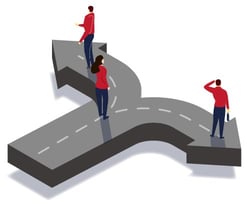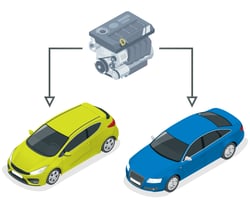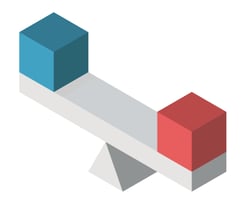 What comes first, the product or the platform? Asking the question of what should come first, the product or the platform, is similar to asking whether the egg came before the chicken. There is no cut-and-dry answer as to which order is better; companies have tried both to varying results. While the answer to the chicken and egg question is more philosophical, the question about products and platforms is best answered based on a company's structure, goals, and resources.
What comes first, the product or the platform? Asking the question of what should come first, the product or the platform, is similar to asking whether the egg came before the chicken. There is no cut-and-dry answer as to which order is better; companies have tried both to varying results. While the answer to the chicken and egg question is more philosophical, the question about products and platforms is best answered based on a company's structure, goals, and resources.
Why Should Companies Consider Platforming?
Before diving into the discussion on whether to start with a platform or a great product, we first need to cover why a company would want to create a platform to begin with. The primary motivators for platforming include reducing costs, simplifying manufacturing, reducing project timelines, scalability, and minimizing redundancies.
How Does Platforming Work?
 The purpose of platforming is to avoid building product models from scratch within the same product family. The platform provides the same base component, from which variations are added to make different product models. One common example from our daily lives is cars. Your car likely has the same platform as various other models made by the automotive manufacturer or their partner brands, even though the body shape, colour, and interior features may vary greatly.
The purpose of platforming is to avoid building product models from scratch within the same product family. The platform provides the same base component, from which variations are added to make different product models. One common example from our daily lives is cars. Your car likely has the same platform as various other models made by the automotive manufacturer or their partner brands, even though the body shape, colour, and interior features may vary greatly.
For example, having the platform means the car company can manufacture the same chassis across its vehicle lines, reducing the cost of designing and building separate chassis models for each vehicle. Starting with a base platform leaves room for variation, innovation, and tailoring models for different demographics. The manufacturer can design a luxury model, an economy model, and a sports model, all using the same chassis design.
The alternative to platforming is called "clone and own." This is when a product is copied and built again from scratch with slight variations to make a new version of the original.
Starting With a Platform
The significant financial investment required is one of the biggest obstacles to creating a platform. While it is true that once a platform system is in place, there will be significant savings in building your product lines, this volume of savings only comes through if your products are performing well. Large companies that research their markets thoroughly and have clear long-term visions for their products can afford to develop a platform. With a bit more long-term security for their product development, they'll have a higher chance of seeing cost savings with a platform.
In most cases, creating a platform also requires time, especially with complex physical products. Companies that want to invest in platforming must have clear long-term goals and the capacity to market other products while developing the platform. It takes steady commitment and a well-researched plan to make that investment worthwhile.
Risks Associated With Platforming
 Developing a platform for a product line shouldn't replace innovation and varied detail across products. One of the risks of using a platform system is that your products can slowly begin to look alike. Your product teams need to define the differences between the product models intentionally. Not paying attention to these variations can result in a lineup of products that all seem the same.
Developing a platform for a product line shouldn't replace innovation and varied detail across products. One of the risks of using a platform system is that your products can slowly begin to look alike. Your product teams need to define the differences between the product models intentionally. Not paying attention to these variations can result in a lineup of products that all seem the same.
Knowing who your customers are and what they need from your product makes it easier to design distinct features for each model. Having a market segmentation strategy also works well with platforming to keep each variation aligned with the target market, with clear performance goals.
Large-scale companies can afford to develop a platform for a product line they have researched and are confident will perform well in the market. Smaller companies and start-ups usually don't have the resources or the means to start with a platform. They must first market and successfully sell their products before they can consider investing in a platform. These smaller organizations can set goals to switch to platforming once they have enough financial capital.
Tesla: A Platform-First Success Story
The creators of Tesla took their vision for an electric vehicle and redefined how cars are made. To build their innovative models, they had to first invent the platform first. This move was considered risky by many critics, as most companies that invest heavily into a platform at the start don't succeed. However, Telsa has proven that its leaders are visionaries with the high success of their vehicles and more models on the horizon.
Starting With the Product
In most cases, you need a great product before you develop a platform. As companies branch out into platforming, they often create a platform to develop a range of new products based on one great product.
Platform Creation Is Easier When You Already Have Great Products
 The benefit of creating a platform from a successful product is knowing you have a solid base to work from. With a product already in development, companies also have something to work from. There is no need to invent, design, and build the platform from scratch but to model the process for other products on the successful model. This method also presents less of a financial risk as the company can continue to make and sell that successful product while working on the systems to manufacture other models.
The benefit of creating a platform from a successful product is knowing you have a solid base to work from. With a product already in development, companies also have something to work from. There is no need to invent, design, and build the platform from scratch but to model the process for other products on the successful model. This method also presents less of a financial risk as the company can continue to make and sell that successful product while working on the systems to manufacture other models.
When to Consider Platforming
Most businesses start with a particular idea for a product or a line of offerings they believe will solve a problem in the market. They then develop and refine the product concept, focusing on features, usability, market research, and customer feedback.
When a product has gained enough traction and market share, a company may consider building a platform around it to replicate that success. A platform will serve as the foundation component for future products and even third-party developers to build on.
Apple: A Product-First Success Story
In the beginning, Apple focused on creating a great product: the Macintosh computer. Once they had products that sold well on the market, they could then move into platform development, creating variations on their original product. They would eventually create multiple lines of devices, along with countless software products and applications, to match those hardware products. It's most common for start-ups to focus on their core product in the early stages and later expand into platforming as they grow.
Establishing Your Product Development Processes
Starting with a product or a platform ultimately depends on your business strategy, the market you're in, and the resources you have access to. While some businesses find success by starting with a product and evolving into a platform, others start with the platform and add products to enhance the portfolio. The most important factor is to align your approach with your long-term business goals and the needs of your target market.
At Gocious, we have designed product roadmap software to help product managers create and manage multiple product lines efficiently, whether you’re platforming or using the clone and own method. Book a free demo to see how Gocious can help you to better plan and manage your products using either strategy.


